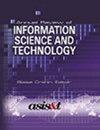Vannevar Bush and memex
Annual Review of Information Science and Technology
Pub Date : 2007-12-31
DOI:10.1002/ARIS.144.V41:1
引用次数: 8
Abstract
Introduction As an informational technology, the World Wide Web has enjoyed spectacular success. In just ten years it has transformed the way information is produced, stored, and shared in arenas as diverse as shopping, family photo albums, and high-level academic research. The “Semantic Web” is touted by its developers as equally revolutionary, although it has not yet achieved anything like the Web’s exponential uptake. It seeks to transcend a current limitation of the Web-that it largely requires indexing to be accomplished merely on specific character strings. Thus, a person searching for information about “turkey” (the bird) receives from current search engines many irrelevant pages about “Turkey” (the country) and nothing about the Spanish “pavo” even if he or she is a Spanish-speaker able to understand such pages. The Semantic Web vision is to develop technology to facilitate retrieval of information via meanings, not just spellings. For this to be possible, most commentators believe, Semantic Web applications will have to draw on some kind of shared, structured, machine-readable conceptual scheme. Thus, there has been a convergence between the Semantic Web research community and an older tradition with roots in classical Artificial Intelligence (AI) research (sometimes referred to as “knowledge representation”) whose goal is to develop a formal ontology. A formal ontology is a machine-readable theory of the most fundamental concepts or “categories” required in order to understand information pertaining to any knowledge domain. A review of the attempts that have been made to realize this goal provides an opportunity to reflect in interestingly concrete ways on various research questions such as the following:Vannevar Bush和memex
本文章由计算机程序翻译,如有差异,请以英文原文为准。
求助全文
约1分钟内获得全文
求助全文

 求助内容:
求助内容: 应助结果提醒方式:
应助结果提醒方式:


